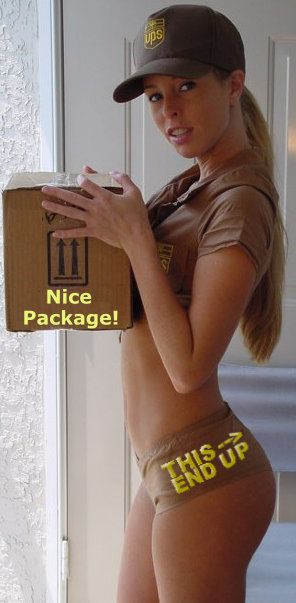FEAR AND MONEY IN DUBAI
‘As your jet starts its descent, you are glued to your window. The scene below is astonishing: a 24-square-mile archipelago of coral-coloured islands in the shape of an almost-finished puzzle of the world. In the shallow green waters between continents, the sunken shapes of the Pyramids of Giza and the Roman Colosseum are clearly visible. In the distance, three other large island groups are configured as palms within crescents and planted with high-rise resorts, amusement parks and a thousand mansions built on stilts over the water. The ‘Palms’ are connected by causeways to a Miami-like beachfront crammed with mega-hotels, apartment skyscrapers and yachting marinas.
‘As the plane slowly banks toward the desert mainland, you gasp at the even more improbable vision ahead. Out of a chrome forest of skyscrapers soars a new Tower of Babel. It is an impossible half-mile high: taller than the Empire State Building stacked on top of itself. You are still rubbing your eyes with wonderment as the plane lands and you are welcomed into an airport shopping emporium where seductive goods entice: Gucci bags, Cartier watches and one-kilogram bars of solid gold. The hotel driver is waiting for you in a Rolls Royce Silver Seraph. Friends had recommended the Armani Inn in the 170-storey tower, or the 7-star hotel with an atrium so huge that the Statue of Liberty would fit inside it, and service so exclusive that the rooms come with personal butlers; but instead you have opted to fulfill a childhood fantasy. You always have wanted to play Captain Nemo in Twenty Thousand Leagues Under the Sea.
‘Your jellyfish-shaped hotel, the Hydropolis, is, in fact, exactly 66 feet below the surface of the sea. Each of its 220 luxury suites has clear plexiglass walls that provide spectacular views of passing mermaids and of the famed ‘underwater fireworks’: a hallucinatory exhibition of ‘water bubbles, swirled sand and carefully deployed lighting’. Any initial anxiety about the safety of your sea-bottom resort is dispelled by the smiling concierge. The structure has a multi-level fail-safe security system which includes protection against terrorist submarines as well as missiles and aircraft.
‘Although you have an important business meeting at Internet City with clients from Hyderabad and Taipei, you have arrived a day early to treat yourself to one of the famed adventures at the ‘Restless Planet’ themepark. After a soothing night’s sleep under the sea, you board a monorail for this Jurassic jungle. Your first encounter is with some peacefully grazing brontosaurs. Next you are attacked by a flock of velociraptors, the animatronic beasts—designed by experts from the British Natural History Museum—so flawlessly lifelike that you shriek in fear and delight. With your adrenaline pumped up by this close call, you round off the afternoon with some snowboarding on the local indoor snow mountain (outdoors, the temperature is 105°). Nearby is the world’s largest mall—the altar of the city’s famed Shopping Festival, which attracts millions of frenetic consumers each January—but you postpone the temptation. Instead, you indulge in some expensive Thai fusion cuisine. The gorgeous Russian blonde at the restaurant bar stares at you with vampirish hunger, and you wonder whether the local sin is as extravagant as the shopping . . . ’
Fantasy levitated
Welcome to a strange paradise. But where are you? Is this a new Margaret Atwood novel, Philip K. Dick’s unpublished sequel to Blade Runner or Donald Trump on acid? No. It is the Persian Gulf city-state of Dubai in 2010. After Shanghai (current population 15 million), Dubai (current population 1.5 million) is the planet’s biggest building site: an emerging dreamworld of conspicuous consumption and what the locals boast as ‘supreme lifestyles’. Despite its blast-furnace climate (on typical 120° summer days, the swankier hotels refrigerate their swimming pools) and edge-of-the-war-zone location, Dubai confidently predicts that its enchanted forest of 600 skyscrapers and malls will attract 15 million overseas visitors a year by 2010, three times as many as New York City. Emirates Airlines has placed a staggering $37-billion order for new Boeings and Airbuses to fly these tourists in and out of Dubai’s new global air hub, the vast Jebel Ali airport. [1] Indeed, thanks to a dying planet’s terminal addiction to Arabian oil, this former fishing village and smugglers’ cove proposes to become one of the world capitals of the 21st century. Favouring diamonds over rhinestones, Dubai has already surpassed that other desert arcade of capitalist desire, Las Vegas, both in sheer scale of spectacle and the profligate consumption of water and power. [2]
Dozens of outlandish mega-projects—including the artificial ‘island world’ (where Rod Stewart has reportedly spent $33 million to buy ‘Britain’), the earth’s tallest building (Burj Dubai, designed by Skidmore, Owings & Merrill), the underwater luxury hotel, the carnivorous dinosaurs, the domed ski resort and the hyper-mall—are already under construction or about to leave the drawing board. [3] The 7-star hotel, the spinnaker-shaped Burj Al-Arab—looking much like the set of a James Bond film—is already world-famous for its $5,000 per-night rooms with 100-mile views and an exclusive clientele of Arab royalty, English rock stars and Russian billionaires. And the dinosaurs, according to the finance director of the Natural History Museum, ‘will have the full stamp of authority of the Museum in London, and will demonstrate that education and science can be fun’; and profitable, since the ‘only way into the dinosaur park will be through the shopping mall’. [4]
The biggest project, Dubailand, represents a vertiginous new stage in fantasy environments. Literally a ‘themepark of themeparks’, it will be more than twice the size of Disney World and employ 300,000 workers who, in turn, will entertain 15 million visitors per year (each spending a minimum of $100 per day, not including accommodation). Like a surrealist encyclopaedia, its 45 major ‘world class’ projects include replicas of the Hanging Gardens of Babylon, the Taj Mahal and the Pyramids, [5] as well as a snow mountain with ski lifts and polar bears, a centre for ‘extreme sports’, a Nubian village, ‘Eco-Tourism World’, a vast Andalusian spa and wellness complex, golf courses, autodromes, race tracks, ‘Giants’ World’, ‘Fantasia’, the largest zoo in the Middle East, several new 5-star hotels, a modern art gallery and the Mall of Arabia. [6]
Gigantism
Under the enlightened despotism of its Emir and ceo, 58-year-old Sheikh Mohammed al-Maktoum, Dubai has become the new global icon of imagineered urbanism. Multi-billionaire Sheikh Mo—as he is known to Dubai’s expats—has a straightforward if immodest goal: ‘I want to be Number One in the world’. [7] Although he is an ardent collector of thoroughbreds (the world’s largest stable) and super-yachts (the 525-foot-long ‘Project Platinum’, which has its own submarine and flight deck), his consuming passion is over-the-top, monumental architecture. [8] Indeed, he seems to have imprinted Scott and Venturi’s bible of hyper-reality, Learning From Las Vegas, in the same way that pious Muslims memorize the Qur’an. One of his proudest achievements, he often tells visitors, is to have introduced gated communities to Arabia, the land of nomads and tents.
Thanks to his boundless enthusiasm for concrete and steel, the coastal desert has become a huge circuit board upon which the elite of transnational engineering firms and retail developers are invited to plug in high-tech clusters, entertainment zones, artificial islands, glass-domed ‘snow mountains’, Truman Show suburbs, cities within cities—whatever is big enough to be seen from space and bursting with architectural steroids. The result is not a hybrid but an eerie chimera: a promiscuous coupling of all the cyclopean fantasies of Barnum, Eiffel, Disney, Spielberg, Jon Jerde, Steve Wynn and Skidmore, Owings & Merrill. Although compared variously to Las Vegas, Manhattan, Orlando, Monaco and Singapore, the sheikhdom is more like their collective summation and mythologization: a hallucinatory pastiche of the big, the bad and the ugly.
The same phantasmagoric but generic Lego blocks, of course, can be found in dozens of aspiring cities these days (including Dubai’s envious neighbours, the wealthy oil oases of Doha and Bahrain), [9] but al-Maktoum has a distinctive and inviolable criterion: everything must be ‘world class’, by which he means Number One in the Guinness Book of Records. Thus Dubai is building the world’s largest theme park, the biggest mall (and within it, the largest aquarium), the tallest building, the largest international airport, the biggest artificial island, the first sunken hotel and so on (see below). Although such architectural megalomania is eerily reminiscent of Albert Speer and his patron’s vision of imperial Berlin, it is not irrational. Having ‘learned from Las Vegas’, al-Maktoum understands that if Dubai wants to become the luxury-consumer paradise of the Middle East and South Asia (its officially defined ‘home market’ of 1.6 billion), it must ceaselessly strive for visual and environmental excess. If, as Rowan Moore has suggested, immense, psychotic assemblages of fantasy kitsch inspire vertigo, then al-Maktoum wants us to swoon. [10]
Sunday, May 20, 2007
Subscribe to:
Post Comments (Atom)















No comments:
Post a Comment